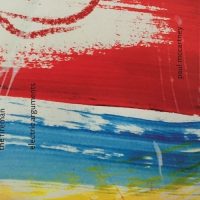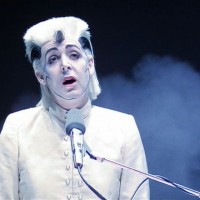Paul McCartney, still stung by the loss of his wife, was feeling nostalgic as the 1990s drew to a close.
Instead of rehashing the obvious successes he’d had with the Beatles or Wings, however, he traveled further into his past – all the way to the music that first sparked something inside the hearts of a young John Lennon and Paul McCartney: The records of the 1950s, of Chuck Berry and Larry Williams, of Carl Perkins and Gene Vincent. Each played an important role in shaping the early Beatles sound.
So, while McCartney holed up in Abbey Road (site of so many brilliant Beatles recordings) and with Chris Thomas (who had co-produced Back to the Egg, the 1979 finale of Paul McCartney’s subsequent band Wings), he went about things in an older old-fashioned way.
That meant none of the decades-old studio craftsmanship so closely associated with McCartney. Instead, the resulting Run Devil Run (released on October 4, 1999) was fast and loose, and – because of its early-rock leanings – almost nothing like the bulk of his other previously issued solo recordings.
McCartney tears through Ricky Nelson’s “Lonesome Town,” and Elvis Presley’s “All Shook Up,” and Berry and Perkins and the rest. A number of the songs were obscure favorites from his youth – while three were brand-new McCartney compositions. None was perhaps more difficult to place than “No Other Baby,” originally issued in the late 1950s by Bobby Helms (who had a hit with “Jingle Bell Rock”) and then by the now-forgotten British skiffle group called the Vipers.
That fit perfectly within the context of these throwback sessions: The Vipers were signed with Parlophone, several years before that became the Beatles’ home label, and they were a key local influence on Lennon and McCartney.
But this was the first time Paul McCartney had recorded following Linda’s death (after years of battling breast cancer), and that gives new heft to the final refrain on “No Other Baby”: “I don’t want no other baby but you!” McCartney sings, with a menacing then melancholy emotion. “I don’t want no other baby,” he then sings, quieter still.
Among his bandmates on “No Other Baby” was David Gilmour, who worked on McCartney’s 1979 “Rockestra” concept for Back to the Egg as well as on the hit single “No More Lonely Nights” from 1984’s Give My Regards to Broadstreet. He provides an elliptical, though nicely understated, guitar underpinning on a Fender Esquire. Deep Purple’s Ian Paice is at the drums.
A bootleg of this tune, written by Dick Bishop and Bob Watson, had been bouncing around (made during a Paul McCartney concert soundcheck at the Toyko Dome in December 1993 and issued on Magical Mystery Tokyo), but the Run Devil Run version was the first official recording. As a single, “No Other Baby” only reached No. 47 in the U.K. and failed to chart at all in America. (Anybody heard of the Vipers? Anybody?) Yet, we find on this album, in this song, some solace for the heartbroken McCartney – and some catharsis for the rest of us, too.
Run Devil Run served as a timely reminder of McCartney’s particular genius and, ultimately, a springboard for his next chapter. This was the music of his youth, of many people’s, but sung through the prism of adulthood – with all of its many losses. Yet, for all of his obvious pain, we know now that Paul McCartney was in the beginning stages of a new creative resurgence. A look back apparently helped him go forward.
- The Bright Spots in George Harrison’s Troubled ‘Dark Horse’ Era - December 29, 2024
- The Pink Floyd Deep Cut That Perfectly Encapsulates ‘The Wall’ - November 29, 2024
- Why Pink Floyd’s ‘The Endless River’ Provided a Perfect Ending - November 11, 2024




RUN DEVIL RUN may be my most favorite McCartney album. Great band, great song selection and it’s all a ton of fun. McCartney has a killer band and he himself was in tremendous vocal form.
I love this album, along with CHOBA B CCCP. Playing the stuff he grew up on seems to energize Paul.
Yep – one of his best… too bad we had to wait all those years for it. 🙂